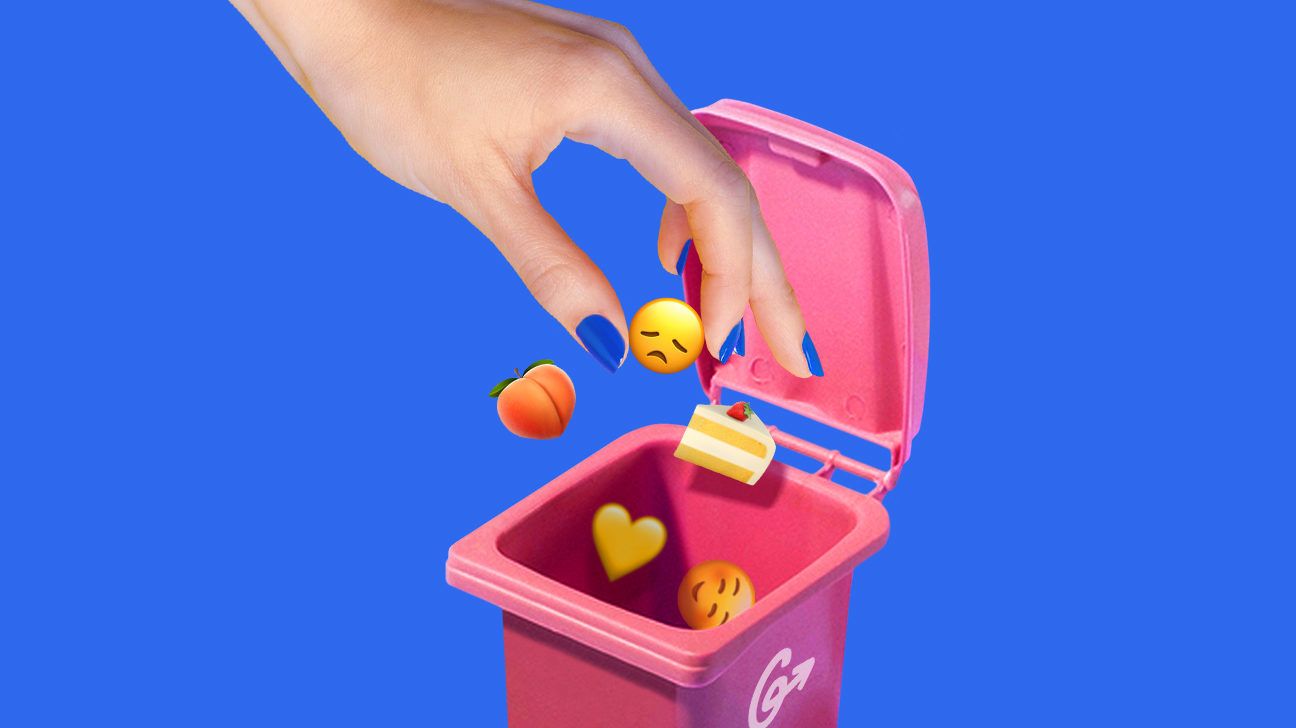
I totally get why everyone, from every culture, has embraced emojis. They serve as a shorthand for longer messages, conveniently express a feeling, proving that a picture really is worth a thousand words, and can help double down on your true meaning. I use them to add a sympathetic tone to a condolence, soften the blow of sarcasm, or, you know, just to wish someone “Happy 🍰🎉.”
I love that they’re playful and nonthreatening. Even the devil face is kinda cute. Heck, you can even get away with tasteful emojis in professional emails. (Wait, that’s okay, right?)
But lately I’ve been curious: How would my communication change if I went without the aid of emojis?
I’m a child of the ‘80s, so there actually was a time when I didn’t have little pictures to get my point across in written communication. Were things “better” then, when we all had to spend more time thinking carefully about our wording, instead of choosing from icons?
Would spelling everything out affect my relationships — or would I feel freed up to express myself better? I wondered if I’d sound like a different person to my family and friends without emojis, coming across as stilted and old-fashioned.
I didn’t prep my friends with alerts like, “Hey, if I sound extra 20th-century for the next few weeks, it’s because…” I didn’t even tell my husband about my experiment. I figured I’d just keep quiet about the whole thing and see how things played out.
It didn’t take long to encounter my first emoji quandary. On the first day of my fast, I received a text that a family member was in the hospital. It just so happens that this family member is often in the hospital, so normally, though it may sound flippant, I simply respond with a sad face.
But this time, I had to think of something to actually say about the situation. I eventually settled on “Oh no!” Truthfully, this felt silly and borderline childish, like something out of a Dick and Jane picture book. On the other hand, it highlighted the fact that emojis can be an easy out when we don’t know what to say. I probably use them this way more than I realize.
Later, when another text shed more light on my family member’s health, I again wanted to write back with just an emoji, like a thumbs up: Message received.
Forced to use words, though, I decided to thank the sender for the info, and for doing so much to care for our sick relative. I could tell from her response that taking a few seconds to express my thanks created a much more meaningful connection than a little yellow thumb ever could.
As the days went on, I found that doing without emojis was a wake-up call for how often I use these images to bolster my own image, too.
As a people-pleaser, I constantly modify my communication with emojis to make myself appear more of one thing, less of another: more down-to-earth or compassionate, less uptight or demanding. Without emojis, I had to confront my own devotion to image management.
Case in point: One day a friend posted on Facebook about a little-known historical mass murder that took place at Frank Lloyd Wright’s estate in Wisconsin. Because I’m a bit of a Frank Lloyd Wright fangirl, I left a comment to that effect, saying “That’s where we spent our anniversary! But more because I’m a history buff than because of the massacre.”
Afterward, I couldn’t help obsessing over the thought that going emoji-less left my comment open to the wrong interpretation. A well-placed winky face could have emphasized, “I’m not a morbid weirdo! I don’t actually love massacres!”
I tend to use emoji to show I’m approachable, funny, or well-intentioned. They can create a buffer between me and whoever I’m communicating with.
No matter what dumb or off-the-cuff thing I may say, I fall back on the belief that the other person can’t really hold me accountable if it’s accompanied by a happy little face or goofy animal picture.
In that situation though, and others throughout my fast, I had to let my words stand on their own.
Allowing my words to be interpreted — and even potentially judged — by others was an exercise in letting go. Loosening my grip on my own image-management was scary at first, but in the end, it actually increased my self-confidence in a roundabout way. Knowing that others would have to take my words at their bare face value, I began to feel that they’d have to take me just as I am, too. And for me, that’s a foreign — but very good — feeling.
In the end, no one called me out on saying anything awkward or stilted (or loving massacres). It’s possible I don’t need emojis as much as I think I do. Maybe I could stand to use more meaningful words and fewer pouting cats. Besides, just like words, emojis aren’t a guarantee of precise communication. Like, what does that pouting cat mean, anyway?
On the other hand, now that I’m back in the emoji saddle, I’m doubly thankful for the little pictures I can pepper throughout my emails and texts. I’m more aware of the many helpful ways they can stand in for words.
A little ❤️can express warm feelings when it might be awkward to actually say “I love you” to someone I’m not all that close with. A 💩can add humor when I want to let a friend know I sympathize with the crappy date she had last night. And sometimes I just need some 👯👯in my life.
If nothing else, emojis make communication more fun. While I may choose them more judiciously now, I’m only too 😊to continue using them.
Sarah Garone is a nutritionist, freelance writer, and food blogger. Find her sharing down-to-earth nutrition info at A Love Letter to Food or follow her on Twitter.

